Demonstrations Against the Health Pass...a Non-Movement?
Temps Critiques
Translators’ Introduction: From a non-European perspective, the ongoing European movements against the "vaccine passport" might be as difficult to grasp as the sight of French gendarmes, armed with both gun and QR code reader, surrounding a crowd of bus riders they've forced to de-board, or the same cops gathered around an outdoor dining area in Marseille scanning every customer's vaccine card. Below, we've translated the analysis of the ongoing French demonstrations against the health pass published by Temps Critiques in August. We find in the text — first of all — an in-depth analysis of an ongoing struggle in the aftermath of the largest movement France has seen "since '68" (namely, the Yellow Vests), and hence an attempt to grapple with ongoing, tense demonstrations that seem potentially more habitual than politically strategic. As countries across the world begin to see more and more prolonged street conflict, the theorization of movements and their aftermaths becomes necessary. Secondly, while management of the COVID pandemic differs greatly from country to country, the intensity of state controls in France demands a discussion around state management, restrictive measures, and political shockwaves of the pandemic that may be easier to avoid in apparently peaceful contexts. Third and finally, the text engages with the question of what constitutes a movement, a question that ought to be central to any thought and action that calls itself revolutionary today. — Ill Will, September, 2021
Introduction to the French edition: The demonstrations against the health pass that have been held for seven weeks and that have managed to traverse the usual summer desert have something exceptional to them. Some find in them the emergence of a spontaneous, angry movement like that of the Yellow Vests; others, the emergence of a confusionist1 populist base of a proto-fascist movement. In any case, there is something unprecedented and unique in them (unique to each city, as when in Paris, on August 28, four distinct demonstrations took place, but also unique to each march) that demands interpretation. Hence, we publish the following analysis by our friends at Temps critiques—an analysis we are not certain we share, but that is worthwhile in prolonging the discussion. —Lundi matin, August 2021
Other languages: Français
For the movement of the Yellow Vests, the decision to hold their demonstrations on Saturdays was anything but insignificant: it signaled a rupture with the union and workerist tradition, which holds protests on workdays. However, what is at stake in the present case is not "the social question," but nor is it a societal question either. In these protests, a sort of unidentified object demands recognition. We will start from there.
Let’s begin with the remarkable geographic and sociological diversity of the demonstrations: city dwellers from the large metropolises, "rurbanites" from the peripheries, and the residents of small villages and their surrounding areas are present too, as evinced by dozens of demonstrations called throughout France. Despite the media's tendency to insist that demonstrators are more likely to be recruited from the least educated, if not the most disadvantaged, backgrounds, there is a wide diversity of age, sex, and social background. This diversity is concretely expressed by the fact that, among demonstrators, one does not only and mainly find the non-vaccinated, hostile to the COVID vaccine and, a fortiori, to vaccines in general, but also those who are vaccinated and hostile to the health pass even when, for pragmatic reasons, they are provided with it.
This diversity of participants and of motivations means that frontal opposition to the health pass constitutes the sole point of unity among demonstrators, many of whom reacted individually against the government's measures for managing the health crisis and who have no tradition of social struggle. In this sense, we might speak of an aggregation of angry individuals without any obvious or immediate political potential, even if opposition to Macron has helped to crystallize it.
While the majority of the population seems to have given up on the possibility of understanding anything at all in the face of the chaotic course of the state's management of the health crisis and its numerous contradictory injunctions, this malaise is starting to give way to attitudes of refusal, which have progressively evolved from private discontent into public expression. But since neither the opposition nor the unions and trade associations have any alternative plan, these demonstrations of anger remain highly minoritarian. This is the case even by comparison with the number of demonstrators during the Yellow Vests movement, despite the fact that today's measures affect many more people on various levels. The difference here is not merely quantitative. Even if it was an illusion, the Yellow Vests really did feel like they constituted "the people" when they chanted "We are all Yellow Vests," because they felt victimized by the politics of the powerful, and this initial position of the victim was something they managed at least partially to overcome throughout the movement, through and in the community of struggle. This is not the situation with regard to today's demonstrators, who know they are a minority, and who are in no way "victims" except perhaps of a policy they perceive to be incoherent and authoritarian. Whether rightly or wrongly, most deduce that it is precisely this incoherence that renders the authority in question illegitimate.
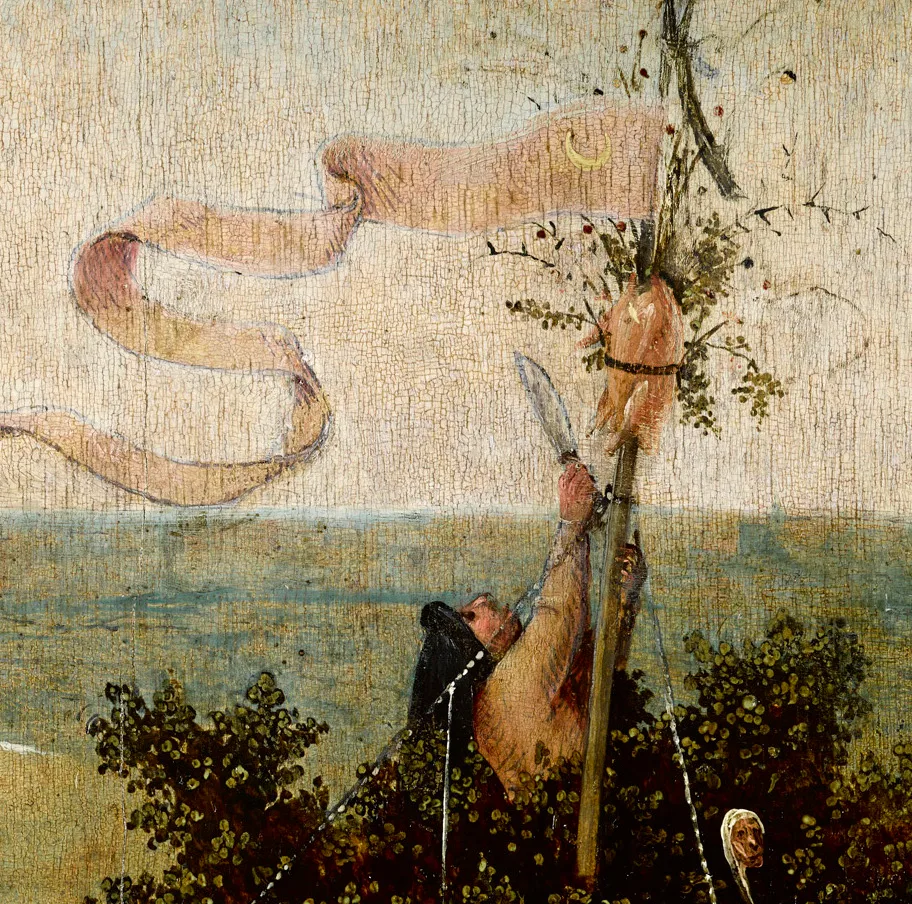
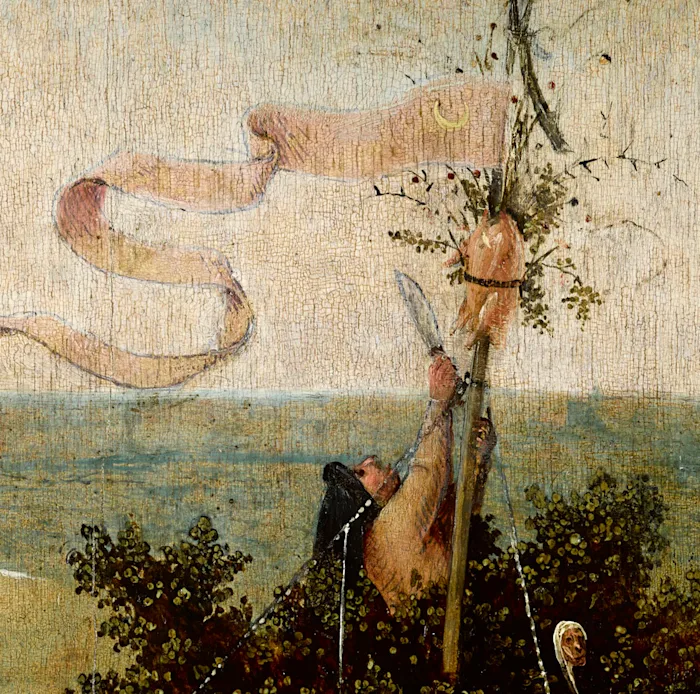
In fact, the government first became conspicuous with its first and most simple directive, issued to elderly people: "Do not go to the doctor; stay home and take an acetaminophen; if your symptoms get worse, consult your doctor or call an ambulance." Consequently, few people went to the doctor at first, and the hospitalizations and intensive care that followed could, perhaps, have been prevented. With this level of incoherency, it is possible to understand how some might have suggested, perhaps, chloroquine... Henceforth, the authorities became uniquely focused on enforcing a single protocol for vaccination — the one recommended by scientific councils — as opposed to a wide variety of possible forms of care potentially compatible with vaccination, which would have taken into consideration the daily care provided by attending physicians. Instead, the Regional Health Agency (ARS) and Social Security enjoined the latter to fall in line with a vaccination effort2 that, at the time, was still not compulsory.
Up to this point, if we are to believe the polls, a sizable portion of the population continued to harbor doubts. Mistrust in the vaccine and opposition to the health pass emerged — and not merely in the private sphere. First, within families, where it created divisions that the first confinement had not revealed; then, on social media, which saw the emergence of wildly diverse critiques, in part because social media is also a place where people "let loose," including drifting into conspiracy theory. State control of these networks turned out to be a hot button issue, as their contents did not fully emerge into the public sphere but gave life to an "underground" of a new kind. What is said there often escapes any moderation or censorship, which is anyway difficult to implement outside "illiberal" regimes (to speak the political-mediatic Newspeak). It’s a problem that has been smoldering for almost twenty years, but which has remained in the shadows due to the apparently harmless (because marginal) character of the discourses that developed there. If the Yellow Vests movement had already proven that social media could be the incubator of something other than trash talk and fake news — because this movement gradually superceded its repressed discourse by appearing in broad daylight — the pandemic and its mysteries have frozen, for almost two years now, any movement or practice whatsoever, while discourse on social media was given free rein to constitute a sort of counter-discourse that is more anti-systemic than it is critical.
Yet the powers that be registered a satisfactory level of acceptance of the confinement measures on the part of the population that believed in their efficacy, along with that of the restrictive measures coupled with social measures to provide higher compensation for partial unemployment. The arrival on the market of vaccines that were expected to solve everything should have reinforced this satisfaction. Instead, the same powers have been caught off guard by the appearance — at the margins, certainly, but bolstered by the persistence of the pandemic—of an opposition, an irritation, or even a revolt against restrictive measures that have lost their power to convince in the course of a pandemic now believed to be endless.
Authorities have been slow to grasp the difference between unprecedented and therefore exceptional confinement measures — far more easily accepted, given that all the other European countries are implementing analogous policies — and measures like the mandatory health pass, which impact daily life in the absence of any immediately obvious relation to the pandemic.3 From here, the jump to the idea that these measures are libercidal [liberticides]4 is not that far. It’s the same with the weather: "how it feels" carries more weight than any reflective consciousness of the thing, and “how it feels” can spontaneously attain an intensity that demands an almost unthinking, immediate response. Marching in the street thus becomes a way to break with the invisibility nurtured by social media, since it is as much desired as it is suffered. Desired, because it gives the illusion of remedying the atomization/particularization of individuals by capital; suffered, because the politicians and media disdain anything that falls outside their existing networks of power, and deny social media any capacity for intervention, relegating it to infra-politics. But the new visibility achieved by these demonstrations has only a relative strength, because the new measures aren’t designed to keep people hiding in their homes, as was the case with the first confinement, or with the police violence that previously aimed to stop the Yellow Vests from demonstrating. The control of public and professional space implemented during this governmental management of the health crisis does not target a concrete embodied enemy that must be fought — because “the enemy” is “the virus” — rather, it targets the whole population. That said, the state does not primarily intend to trace the movement of individuals, as it might in China. Forcing vaccination in the context of the health crisis is not an end but a means.
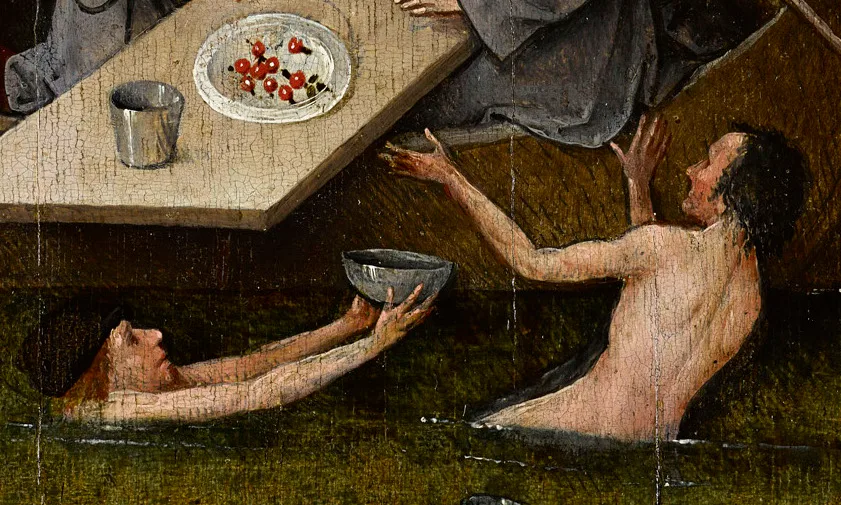
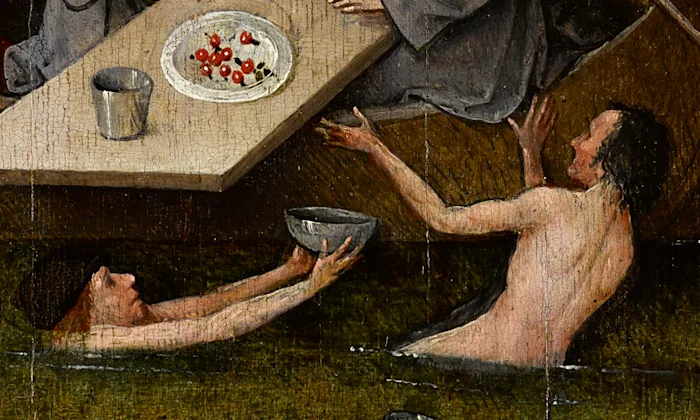
Power now attempts to flush out those who are recalcitrant (whether passively or actively) in the face of the current health measures by "marking" them as soon as they engage in activities, quotidian or not, outside their homes. In the case of France — a country where the protests were not the first of their kind but appear to be among the most extensive and most frequent — a battery of measures that are both more restrictive and more transgressive of existing legislation than in other "liberal" democracies lies at the heart of the conflict. So long as the powers that be feel that they have the majority on their side, what matters is that everyone falls in line — hence the stigmatization of "those with a below average level of education," as pollsters and sociologists euphemistically refer to what isn't even really a plebeian, and still less a working class. Yet it would not have occurred to anyone (politicians or journalists alike), at least since the Third Republic, to reproach the latter for its lack of education when it went on strike, on sick-out, or demonstrated its insubordination as in 1968. We are back in the time of class hatred... in the absence of classes in the historical and Marxian sense of the term.
The current demonstrations are not based on objectively worsening conditions that make life difficult and onto which governmental measures have been grafted until the situation reaches a boiling point — as was the case with the Yellow Vests. Certainly, as some journalists and social scientists have attempted to point out, even if the virus affects both the rich and the poor, the urban and the rural, vulnerability to it and access to care are not the same for everyone.5 But this is not what emerges from the demonstrations and, for us, this is not what is remarkable. What is important is the subjective assessment of the pandemic. Apart from the "extremists," there are, on the one hand, scientists6 and certain materialist Marxists who have suddenly (in the course of the pandemic) gone from hating the big pharmaceutical companies that profit from the capitalist exploitation of our "health capital" to reverence for the progress of science (which must have become neutral in the process) that made the miracle vaccine available in record time. And, on the other hand, there are those who have been in more or less total denial, "average" individuals who have raised doubts about the delays, the reversals, perhaps the lies of politicians and academic luminaries (the mask, not the mask; inside, not outside, then outside; the vaccine is freedom, no the vaccine protects but it is necessary to keep the restrictions in place, the vaccine prevents...no, it does not prevent...etc.). Who wasn't ready to listen to Raoult or Fouché7 when they maintained, at the beginning, that it was above all necessary to treat the patients — before tiring of their assertions, which were as peremptory as those of the official scientists? The journalists returned fire by talking to us about a "scientific community" that doesn't exist. There was nothing to see here — just obey. But even the health care workers who behaved "appropriately," (as those in power say) during the first confinement and the most intense phase of the fight against the virus, are now singled out if they express the slightest doubt as to the need for their own vaccination, and threatened with suspension if they refuse.
Faced with the multiplication of health measures and their apparent inconsistencies8, it is unsurprising that protests vary according to the desires of each person, the context (work, daily life, leisure), or the moment. Above all, they convey a vast disparity of concerns, ranging from conspiratorial interpretations of governmental measures, to rejection of the vaccine, to rejection of the tracing of individuals by the state. While these reactions are not all the same, what they have in common is that they are positions marked by an isolation from a French people that is being vaccinated en masse, even if not all for the same reasons.9
As with the Yellow Vests, the struggle for visibility seems to prevail until it becomes detached from any precise content. Here, for example, even refusal of the health pass (by people who have it) taken alone appears as opposition to Macron and what he represents. The risk is that the movement's goal becomes only the expansion of this visibility, and thus that it becomes incapable of dealing with the diversity or even incompatibility of the contentions expressed by its participants. In this sense, they delude themselves as to their oppositional consensus, which is largely fictitious. More fictitious, at least for the moment, than that of the Yellow Vests, whose movement followed a process of gradual transgrowth10 from its initial motivations to distancing itself from the imperatives and norms of capitalist society, unlike (for now) the movement against the health pass.
It is the possibility of such a development that the government is currently examining, even if it accepts a large margin of error by relying upon the nevertheless real division between "pro" and "anti." Yet the fact that this division exists is not a reason to take the authorities' portrayal of the vaccinated as altruists and the non-vaccinated as egoists at face value. Stigmatize, blame, divide—this is a method that has proven its worth in politics, and even Macronian neophytes can appropriate it. Hence, the "caregivers" (nurses, ASH, and care assistants, mainly), who are undoubtedly the most represented profession in the demonstrations and who showed their "altruism" in the first confinement, can lend common sense to what seems to be all over the place. As for the unions, the CGT and SUD-Santé's attempt to link the fight against compulsory vaccination and the health pass with the struggle against the dissolution of the public hospital gives the appearance of a shared trajectory. Given the tensions between unions and the corporatism of the profession, we can't be entirely sure there's not a sleight of hand at work, a sleight of the same type as was behind the alleged convergence of hospital workers and Yellow Vests two years ago. That said, while no measures have been taken to reverse the ongoing disintegration of the public hospital in France and of hospital systems in general in places like England, Spain, or Italy, the public authorities now accuse those who do not conform to the injunctions of causing future delays in serious operations in the hospitals. It is thus understandable that caregivers, and not only their unions, have it bad.
Again, the media has tended to emphasize that the level of acceptance of health measures among health care personnel is correlated to their level of education. From this point of view, the Macronian state is unique in comparison to its Gaullist or Mitterrandian predecessors. It is not a political government or even a politician that we are dealing with here, but an exposition of supposed "heads" born out of nowhere.11 It is therefore not surprising that the spontaneity of the new "masses" consists essentially in calling for the resignation of rulers, if not chopping off heads.
Nevertheless, the media does occasionally sound the alarm. In a recent editorial, the voice of its master, Le Monde, worries about the government's approach to the pandemic. For the mainstream media, everything is always a question of communication. The government's approach isn't educational enough; it would be better to do prevention than repression; authoritarian decisions in the field of health will not be blocked if their necessity is imposed by a very large majority that recognizes the reality of our emergency situation. This is what worked during the improvised management of the first confinement, but it couldn't last, because prolonged operations can no longer take refuge behind an emergency that becomes quite relative as we see, as on the front pages of the newspapers on August 10 and 11, that is really more a question of an "absolute climate emergency."
Behind the rhetoric that attempts to find an effective balance of education and authority, there is the fear of a new Yellow Vest movement, since it now seems to have replaced May '68 as the yardstick for assessing threats to the continuity of the state. But there is no new Yellow Vest movement because, for the moment, there seems to be only a sort of immediate protest that struggles to become a movement. For the most part we see no distinctive symbols, a few individual signs but no collective banners, no Yellow Vests in large numbers, even if one sometimes has the impression that (albeit without their vests) they continue to shape demonstrations against power in general and Macron in particular. If this last point was often more implicit than explicit, the “peuple-en-fusion” they represented is far from being found in the demonstrations against the health pass. The idea that "We are all Yellow Vests" has once again become unthinkable for those individuals whose manner of protest is fundamentally individual. The movement has not found a relay like that of the roundabouts, which aligned its site (the periphery), its original motivations (the price of gas, transportation), while satisfying that need felt by every movement to find a social base that functions as a place for discussions, conviviality, and camaraderie, while also potentially serving as an at least temporary base for resistance and the longevity of struggle.
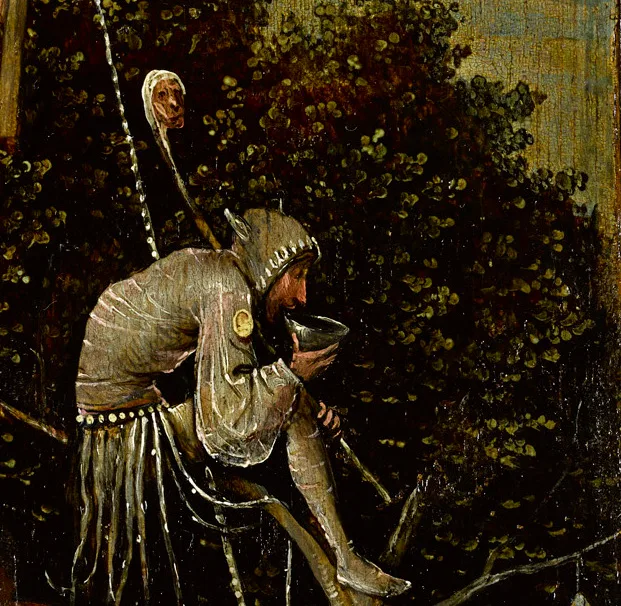
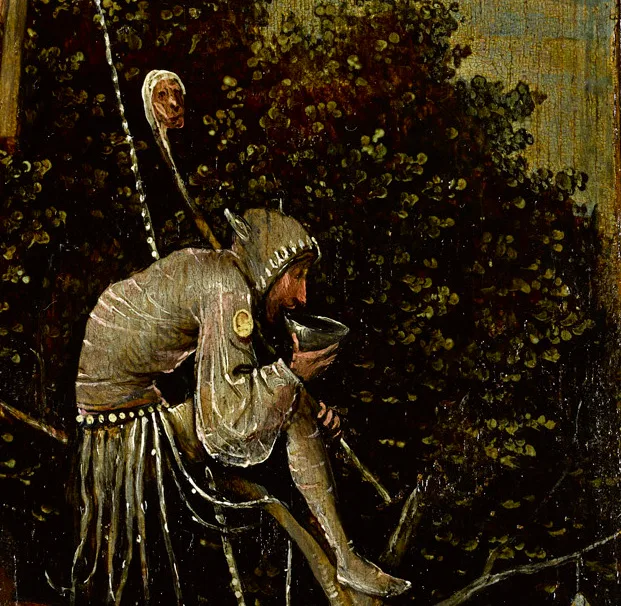
Faced with this lack or void represented by the absence of a collective (whereas there were groups of Yellow Vests), former Yellow Vests have become a sort of militant base and memory that constitutes a bridge for new demonstrators who support or they say support the Yellow Vests, many of whom were new demonstrators at the time. The oppositional sequence of these last years — the movement of squares (despite potential criticisms of its formalism), the struggle against the Loi travail, the movement of Yellow Vests, and certain actions or initiatives around the pension reform struggle — shows the extent to which the "leftist" labor and trade union demonstrations have become the stuff of a ritualized archaism, hardly at all shaken by the postmodern dimensions of a cortége de tête that has itself become ritualized in the short span of two or three years. Even if today's demonstrations do not constitute a movement, a little of the power of these last years of struggle resonates in them, if only in the resumption of certain slogans or in their insistence upon demonstrating, permitted or not, in the context of a state of emergency.
The life of the opposition to the health pass lies in the relationship between submission and anger, without any continuity aside from the recurrence of anger, since the contemporary predominance of the network form of the state tends to suppress all mediation and hence every prospect of negotiation that, in the preceding phase, made it possible to proceed not in fits and starts, but by a processual struggle from which a rapport de force could emerge. Here, anger certainly accumulates, but it does not have the character of the "proletarian experience" that objectified the class struggle and inscribed in it cycles of struggle, and hence continuities and discontinuities with periods of higher and lower intensity that succeeded one another in time. Nor does it have the process-character of the Yellow Vests movement which, once it reached and then passed the excitement of November-December 2018, was able to sustain itself for a time owing to the exchanges and links hatched on the roundabouts and that facilitated other actions such as blockades, consciousness-raising outside the Saturdays of demonstration, and other forms like general assemblies — in short, actions that could be called ‘militant.’ A complex of actions and people that produced a consciousness of having participated in what was more than a collective struggle: a collective adventure. Alongside the broad support of the population, this is what allowed the Yellow Vests to hold out for so long against the attacks (both by the media and the police) week after week.
Here, the sense that nothing has really begun gives one the impression that temporality itself has disappeared. Even if the demonstrations against the health pass are immediately against the state's measures and its haphazard management of the pandemic, they do not confront the state. This explains the difference in how the police treat demonstrators. The violent tension that prevailed in yesterday's demonstrations has been replaced today by a mere spectacle of conflict. The situation is paradoxical: the state is even more in a state of exception now than it was before, but its opponents are not enemies of the state; they are simply not on the same page. To this extent, the repetitive demonstrations in the absence of any notable gain from one week to the next is, for the moment, perfectly controlled by the state, and to its own advantage. The protestors express themselves, but they are presented as the foil to the "appropriate attitude" that, in the Newspeak of our society, has already replaced the old "citizen attitude." To this extent, and as we have previously seen, if we have really been in a state of exception since the onset of the war on terror, the controversial implementation of the "global security" law, and now the state of emergency around the pandemic, it is not a state of exception in the sense theorized by Carl Schmitt or Giorgio Agamben.
While earlier demonstrations were either spontaneous or emerged from social media networks, those against the health pass were more organized in the sense that they were called for, if not initiated, by political factions like the "Patriots," who understood they were not dealing with one or more coordinated collectives12 and therefore sought to take advantage of the demonstrations before the presidential elections by proposing routes they were able to file officially. Beyond the attempt to politically infiltrate a political group13, what triumphed here was a certain pragmatism with regard to the permitting of demonstrations and the assurance that they could proceed without too many clashes, in the name of freedom but in respect of order. The strategy of these demonstrations therefore differs from that of the Yellow Vests, who held fast to the idea that demonstrating is not an acquired right, as trade unions and various supporters of freedom think, but a kind of natural right to insubordination in line with the constitution of 1793, one that cannot be negotiated. And to show that pragmatism was in fact excluded, this precept/principle did not cease to function in the Parisian demonstrations that continued despite the fact that, soon after Spring 2019, it was no longer possible to create a "wild" demonstration14. Thus, within the Yellow Vests movement, if we set aside Paris, the issue of whether or not to obtain a permit was the subject of bitter discussions, renewed week after week. This is not the case here. There are no occupied places, little time to meet, and only marginal actions that occur during the week. While some left-wing activists still attempt to graft the general assembly onto the struggle, its obsolescence was already evident to everyone at the time of the Yellow Vests, and today they seem ever more detached from the energy of the demonstrations.
Since the Yellow Vests left their mark on the collective spirit, multiple demonstrations can coexist on Saturdays. The habit of demonstrating without official declaration has opened the possibility for diverse initiatives to spread out, rather than always concentrating forces: a coexistence of all discontent and revolts. Hence, in Paris, on Saturday, August 21, 2021, there were no less than four demonstrations, some of which were called by Yellow Vests. This combination of individuals, more heterogeneous than associated, is unable to find a common guideline, as the mixture of the most improbable positions instead generates only the most minimal unity. This absence of a guideline allows the demonstrations to persist beyond political divisions and individual positions.
The repetition of the demonstration in itself, on the model of the Saturdays of the Yellow Vests, appears to bring to a close any reference to class struggle — the completion of a tendency already visible during the Yellow Vests. The red thread is thoroughly cut, even if it is not the demonstrators who cut it. Consequently, references to proletarian movements are not rejected, as they might have been at the origin of the Yellow Vests movement — they are unknown, which is not to say unheard of, outside the few political or union activists who participate. The class imaginary is less present because it is the immediacy of refusal that prevails. The reference to the French revolution persists, but it would be more to that of 1792 than 1793. The first verse of the Marseillaise is sung more or less often, a simple tricolor flag is waved, but it is no longer a question of "going after them."
If the movement of the Yellow Vests, as we have already said, attempted to transcend its original motivations, we are in a completely different situation today, itself indicative of the nature of capitalized society. The demonstrations do not gesture to any "day after." Worse, it is only the powers that be and the media in particular who have dared to pose the question of the "day after," because the end of the first confinement opened the possibility of asking something else — and this is what comes to the mind of even those who govern. Whether one is in favor of today's demonstrations or not, what is at stake in them is not the day after but only, possibly, of resisting what could become worse.
What we find instead, in an entirely flattened form, is the accelerated virtualization of the world with the increased role of GAFAM [Google, Apple, Facebook, Amazon, Microsoft] via telecommuting, QR code controls, and so forth. In the same way that "the dead seize upon the living" (Marx) in the work world, with the predominance of technoscience in the development of capital information technologies have initially replaced the social relations that were prevented by the confinements, and then accompanied them, as can be seen with the current health pass.
August 26, 2021
First published in French in Lundi matin #302 and Temps Critiques. Translated by Ill Will.
Notes
1. Translators’ note: The French left media and academics employ the term “confussionisme” to describe the blurring — potentially intentional and often linked to conspiracy theories — of traditional divisions between far-right and far-left political thought and terminology.↰
2. They are still used today to distribute the AstraZeneca doses that, for good or bad reasons, nobody wants.↰
3. It should not be forgotten that all this takes place in a context of a state of emergency initiated against terrorism and then maintained or actualized and enlarged within the project of the "global security" law.↰
4. Translators’ note: The French term “liberticide” is a colloquialism that means the death of liberties or freedoms, analogous to patricide.↰
5. In Le Monde on July 24-25, a survey by health geographer E. Vigneron notes a vaccine divide (independent of age) between the West and the North, the territories least affected by the pandemic but the most vaccinated, and the Southeast and East, most affected, but with the least vaccines (a paradoxical observation, but one open to multiple interpretations); but above all, the vaccine divide roughly follows the "social divide": the most affluent communes and the city centers where one can find the most vaccinated people, and the least affluent communes and the suburbs and banlieues where there are the fewest.↰
6. Contrary to what scientism (which is only ideology) claims, science does not seek an absolute Truth, which does not exist, but at most partial and often provisional truths, which are only so many "rectified errors" (cf. Gaston Bachelard, La formation de l'esprit scientifique, Vrin, 1983, p. 10 and 239). What is unquestionable is not this or that actual truth, the fruit of a scientific approach, but the approach itself, which is precisely in a position to question its own previous results. The least that can be said is that the different scientific or defense councils have not shown such an approach by advertising only their own "expertise," which is limited by the division of specialties. Nevertheless, today, in capitalist society, "scientism" is far from having the influence it had not only in bourgeois society but also during the Thirty Glorious Years. It is now rivaled by criticisms from ecology, religious currents, esoteric currents, naturalism, etc. This is why dissident scientists, deviant biologists, and anti-vax doctors are so popular.↰
7. Translators’ note: Louis Fouché is deemed an “anti-vax doctor” by Le Monde; Didier Raoult is a renowned French scientist and virologist now infamous for promoting hydroxychloroquine as a treatment for COVID.↰
8. Not only apparent, since the draft health pass adopted on July 1 by European Union countries is granted only to citizens who have received the few vaccines approved by the European Medicines Agency—AstraZeneca, Janssen, Moderna and Pfizer. And even then, for AstraZeneca, only those produced in European factories are recognized. However, eight vaccines are already authorized by the WHO and widely distributed around the world. Yet these products remain excluded from the passport. Thus, hundreds of millions of people who have benefited from other vaccines against Covid remain banned from Europe. While anti-passport demonstrators in Europe are contrasted with the plight of Tunisians without vaccines and victims of the epidemic, no serious and urgent action is taken to release the patents. For the moment, Africa is only entitled to the COVAX mechanism, which is based on the distribution of eleven vaccines, eight of which are not internationally recognized. According to a study by Imperial College London, the cost of producing a dose of Pfizer vaccine is $0.60 (€0.51); the additional costs of packaging and quality control would bring the price to $0.88 (€0.75) (see here). Pfizer sold its vaccine dose to the European Union at a unit price of €15.5 before recently deciding to increase it to €19.5. At this price, Tunisians wouldn't even come close to being vaccinated.↰
9. This isolation from vaccinated French people seems real, since those who speak of the isolation of the demonstrators, or of the anti-pass in general, from the point of view of their own political position do so by cloaking themselves in their political integrity in order to hide the fact that they reproduce the discourse of the powers that be and of the State. The position of Lorenzo Battisti of the CGT Bank-Insurance appears pathetic from this point of view. His concluding argument is worth noting: "These demonstrations should be focused on the fight against the freedom to fire [an employee] in the absence of a health pass, and not against the health pass in itself" before the usual call to class struggle: "I ask everyone to be careful about their participation in these demonstrations, as this could harm future class movements in which the CGT must participate" (available on the site Between the Lines Between the Words, among others).↰
10. By "transgrowth" [transcroissance] we mean the fact that an event can go beyond its initial specific and limited character. We think we have made this clear with regard to the Yellow Vests movement. It is a perspective that is missing from today's protests. Indeed, the struggle against the health pass in itself cannot lead to anything (especially since there are and will be more and more people vaccinated compared to the first demonstration of July 14) if it does not encounter the struggle against the global security law initiated a few months ago, but which itself had had difficulty in making a movement by gathering only the militant organizations and the remnants of the Yellow Vests.↰
11. Polling institutes and the media recognize this in their own way by pointing out their lack of support as an explanation for the failures of LREM representatives in municipal or regional elections.↰
12. There are indeed some collectives. For example, in the Paris region: the collective "Let the doctors prescribe" or "Paris for freedom" created by Sophie Tissier, coordinator of Force jaune, a Parisian group characterized, among other things at the time, by its minoritarian willingness within the Yellow Vests to call for demonstrations; "Reaction 19" of the lawyers Carlo Brusa, Di Vizio or Virginie Araujo, which led on the one hand to an action against mask requirements and the curfew, and on the other hand an opposition to the wearing of masks in schools, but they remain disparate. It is worth noting that Brusa is a former member of Forza Italia.↰
13. Philippot's entryism would have been impossible within the Yellow Vests movement, in which, admittedly, elements of the extreme right intervened, especially in Paris and Lyon, but as anti-capitalist fascists and not as right-wing politicians practicing clientelism.↰
14. Translators' note: “Une manifestation ‘sauvage,’” a ‘wild’ demonstration, refers to a march that is either unpermitted or that goes off the route agreed upon and controlled by the police.↰